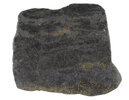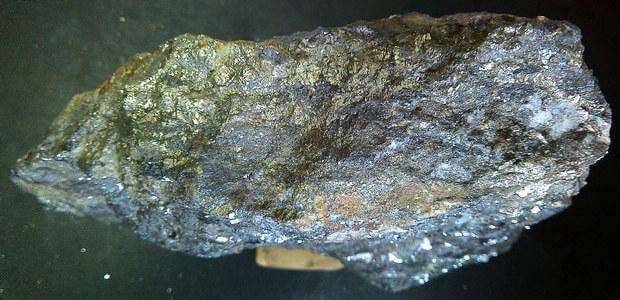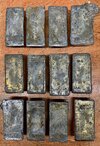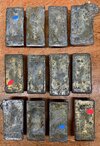JimGnitecki
Member
- Joined
- Mar 28, 2010
- Messages
- 1,258
I am examining and cleaning up the remainder of both the 30 year old wheel weights and the Lead ingot I was recently given. A few of the lead ingot have a sloght yellowy tint on only a portion of the bottom of the ingot.
What might be causing that?
Is there any alloying agent that can appear yuellowy if not fully mixed into the ingot? Or might this be a contaminant introduced from the ingot mould somehow?
ALL the ingot have either a Saeco, or Lyman, or Ohaus lable cast into them, so I know they were cast in actual ingot molds, not some other substitute moulds.
Jim G
What might be causing that?
Is there any alloying agent that can appear yuellowy if not fully mixed into the ingot? Or might this be a contaminant introduced from the ingot mould somehow?
ALL the ingot have either a Saeco, or Lyman, or Ohaus lable cast into them, so I know they were cast in actual ingot molds, not some other substitute moulds.
Jim G





